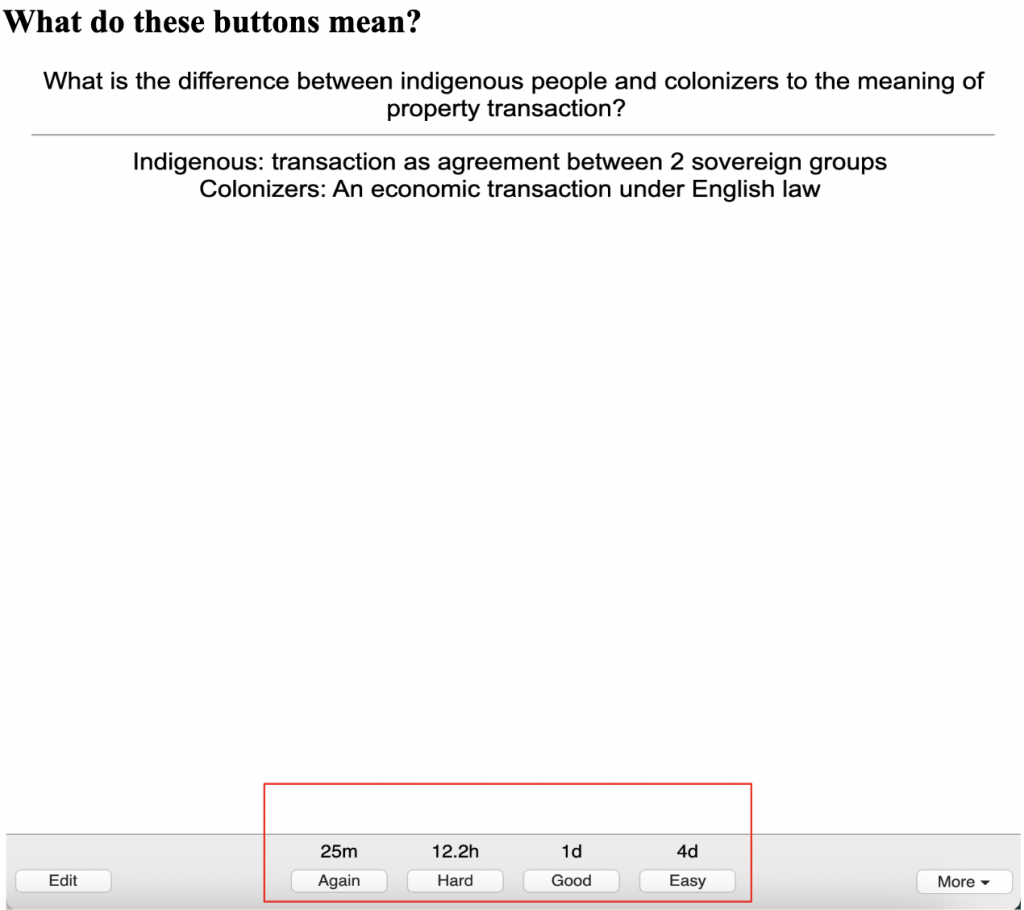Anki: A Word of Warning and Fundamental Guide
Written by: Angelic Cox | Edited by: Arshad Mohammed
You arrive on test day, forgetting the small details your biology class began testing you on. This builds anxiety within you, and your fear of not understanding how to get to the correct answer leads to lower exam performance.
Fortunately, there is a solution to your problem. Through Anki, digital flashcard creation can help you remember specific facts presented throughout your course.
Before we start on the technicalities of flashcard creation, here is a warning: Anki should be used for lower-order thinking skills(lower-order processing) of specific details that cannot be integrated into a concept. You can test if something is a detail if it relies on abstract words and cannot be translated into an image. For example, in my ESPM 50 AC course, a small detail I believed was important was “Indians perceived transaction as an agreement between 2 sovereign groups, English thought it was economic transaction under English law”(Cronon,8). It is difficult to rely on an image to exemplify the abstract concept of economic transaction under English law and 2 sovereign groups, so words and memorization are needed in this process.
I also want to emphasize that lower-order processing should not be the primary learning technique you rely on– which is a mistake many students and I have made. If you end up with thousands of flashcards for a 15-week course, you are studying wrong.
Your primary learning techniques should rely on high-order processing skills, which can be applied intuitively during listening and reading. This will lead to a more succinct note-taking and analysis process. I plan to cover high-order learning skills in another article, such as mind map creation.
1: the levels of higher-order thinking skills and lower-order thinking skills
Lower-order thinking skills – bloom’s taxonomy. Google Sites: Sign-in. (n.d.) from https://sites.google.com/site/supersophomores675/l
Since we know that flashcards are a secondary study technique, we can move on to the creation side.
How do flashcards work?
Flashcards rely on spaced repetition, which is when you leave a topic for some time and then come back to it to revise. The intervals of time you leave in between is up to you, but I suggest doing at least a few cards daily so you are constantly being exposed to the material you want to memorize.
How do I get started with Anki?
1. Go to AnkiWeb and download the software on a personal computer. There are mobile versions, but on iOS, it costs around $25.
2. Open Anki and hit “Create Deck,” where you will name the deck.
3. Open the deck you just created and press “Add” to start your flashcard creation

How do I make flashcards on Anki?

- When starting, you should stick with the “basic” card type. But there are other card types available that you can download online. Another popular card type to use is “cloze deletion”. You can look into it, but it is not necessary to use.
- You type your question relating to the material within the “front” text box and your answer in the “back” text box.
2.1 Here is a resource on the creation of questions for flashcards.
- Tags can help group your flashcards, so I recommend adding a tag.
3.1. You can create “subdecks,” but it should be done rarely. Having tags in your organization system is better since it is less cluttered.
- Add your cards, and you can begin studying!

- The buttons at the bottom of the screen are a way to gauge how well you memorized the material. You can self-judge how well you know the fact, but as a general guide, most of your cards should be in the “Good” section, some in the “Hard” and “Easy” sections, and little within the “Again” section.
- You must learn the material beforehand, so if you consistently press “Again,” you must engage in higher-order processing.
- The times on the top of the buttons are when you need to come back and revise the flashcards. They are the interleaving intervals.
- You must revise your cards daily to benefit from the spaced repetition method.
It may feel uncomfortable when you begin to change your study methods because you are thinking in an unconventional way to you. Just know that this discomfort means that you are learning. As a result, you will have a more efficient study process.
Next time you walk into a test, you won’t be thrown off by the small details

